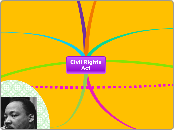Learning: Lecture 6
Operant Conditioning
Reinforcement
Schedule
Variable-Interval
A response is reinforced after a variable
amount of time has elapsed
Fixed-Interval
The first appropriate response after a fixed
amount of time is reinforced
Variable-Ratio
A behaviour is reinforced after an average
number of times, but on an
unpredictable basis
Fixed-Ratio
A behaviour is reinforced after a set number
of responses
Partial Reinforcement: reinforcement
that is occasional or intermittent
Continuous Reinforcement: reinforcement for
every occurrence of the targeted behaviour
Reinforcement should be:
5) Motivating
4) Sufficient
3) Not overused
2) Contingent
1) Immediate and consistant
Negative Punishment
taking away
something desirable in response to an observed
behaviour
Positive Punishment
- adding an adverse
stimuli in response to an observed behaviour
Negative Reinforcement
taking away something negative
after a behaviour is observed
Positive Reinforcement
adding something positive after a
behaviour is observed
Law of Effect
- Behaviours followed by positive
outcomes are strengthened and behaviours
followed by negative outcomes are weakened
Social/Observational Learning Theory
Observational Learning
Requirements
Reinforcement: - if the model is reinforced than it enhances the
effects of observational learning
Motor Reproduction: must have the skill and practice to be able to
replicate
Retention: - the learner requires clarity and meaning from the
model
Attention: the model must have the attention of the learner
learning that occurs when a person
observes and imitates someone else’s
behaviour
Classical Conditioning
Phobias and fetishes can be created or they can
be over come with the use of classical conditioning
Stages
4) Discrimination
3) Generalization
2) Extinction
1) Acquisition
Conditioned Response
With continuous pairing of the neutral stimulus
and the unconditioned stimulus, the neutral
stimulus elicits the same response
Stimulus Response
Neutral Stimulus (NS)- a stimulus that does not
bring about a desired response (before learning or
conditioning)
Unconditioned Stimuli (US)-A stimulus that
automatically produces a response without any
prior learning
Pavlov’s dogs
Dogs are trained to salivate at the sound of a bell
connects automatic response
to external stimuli









